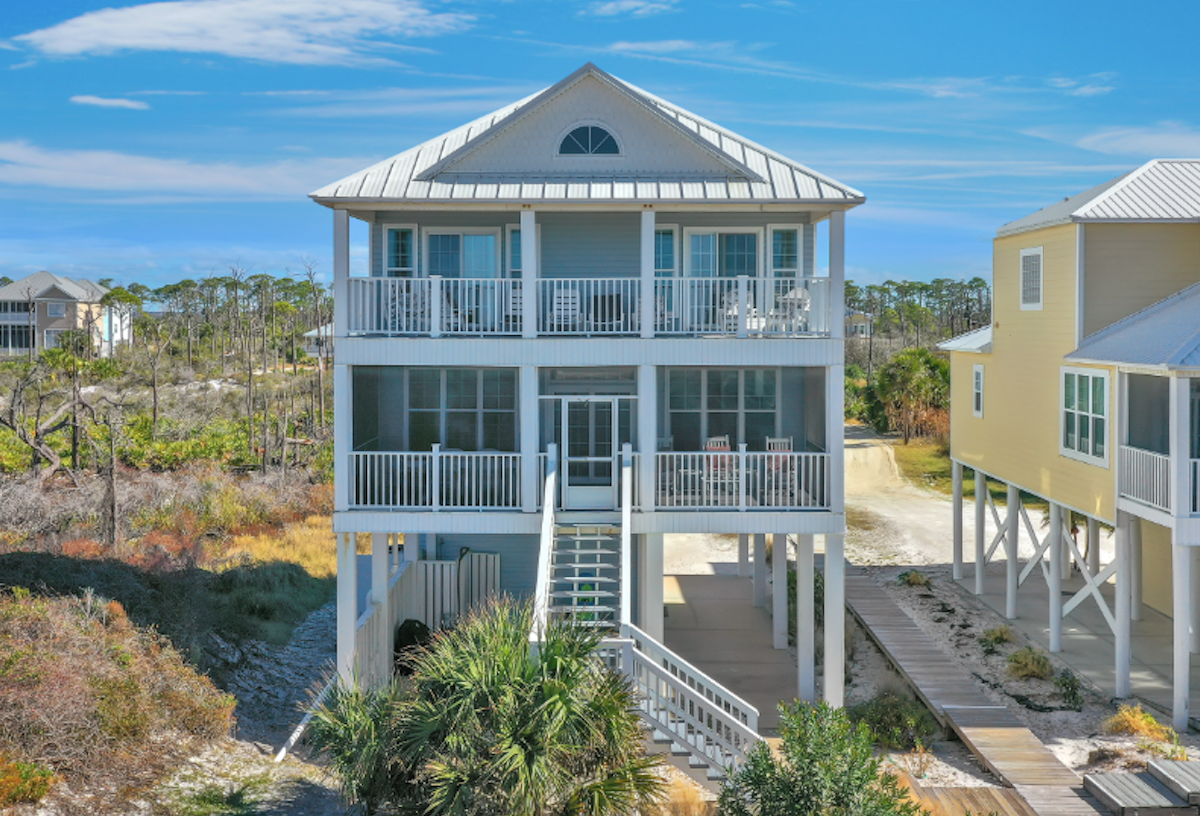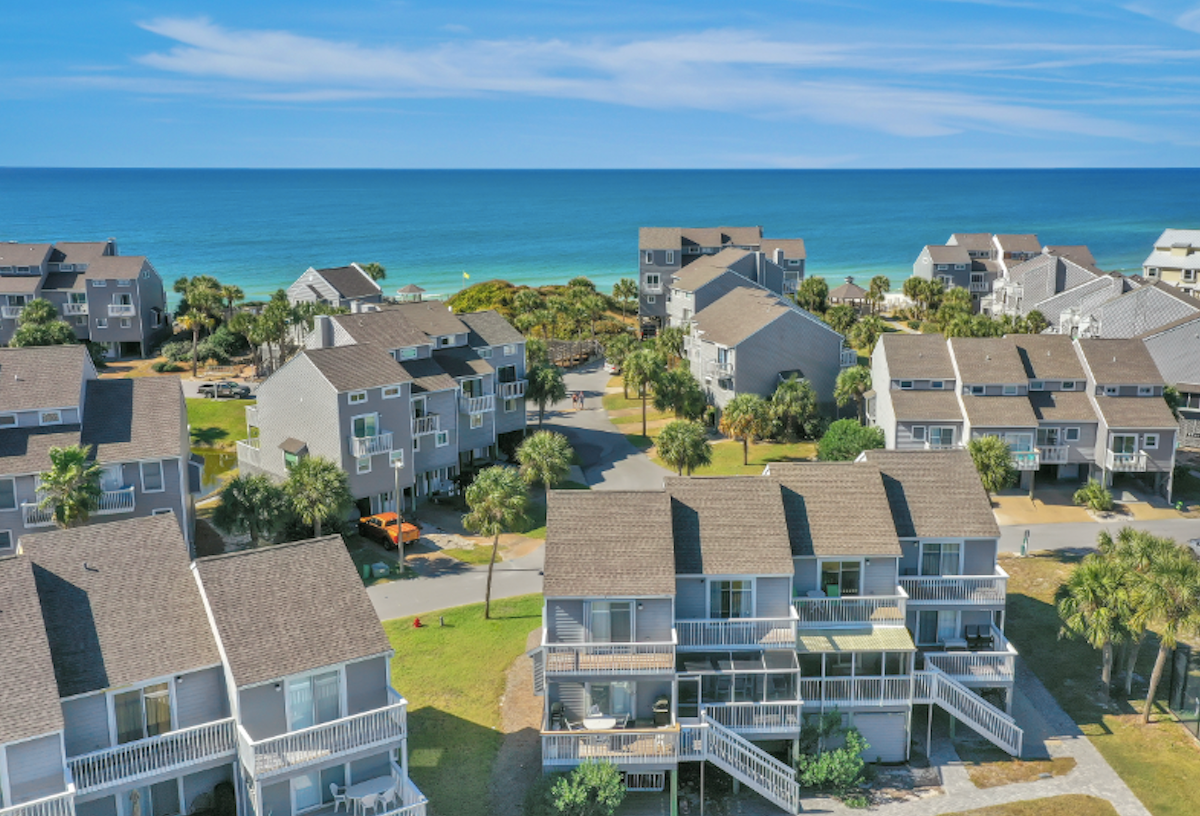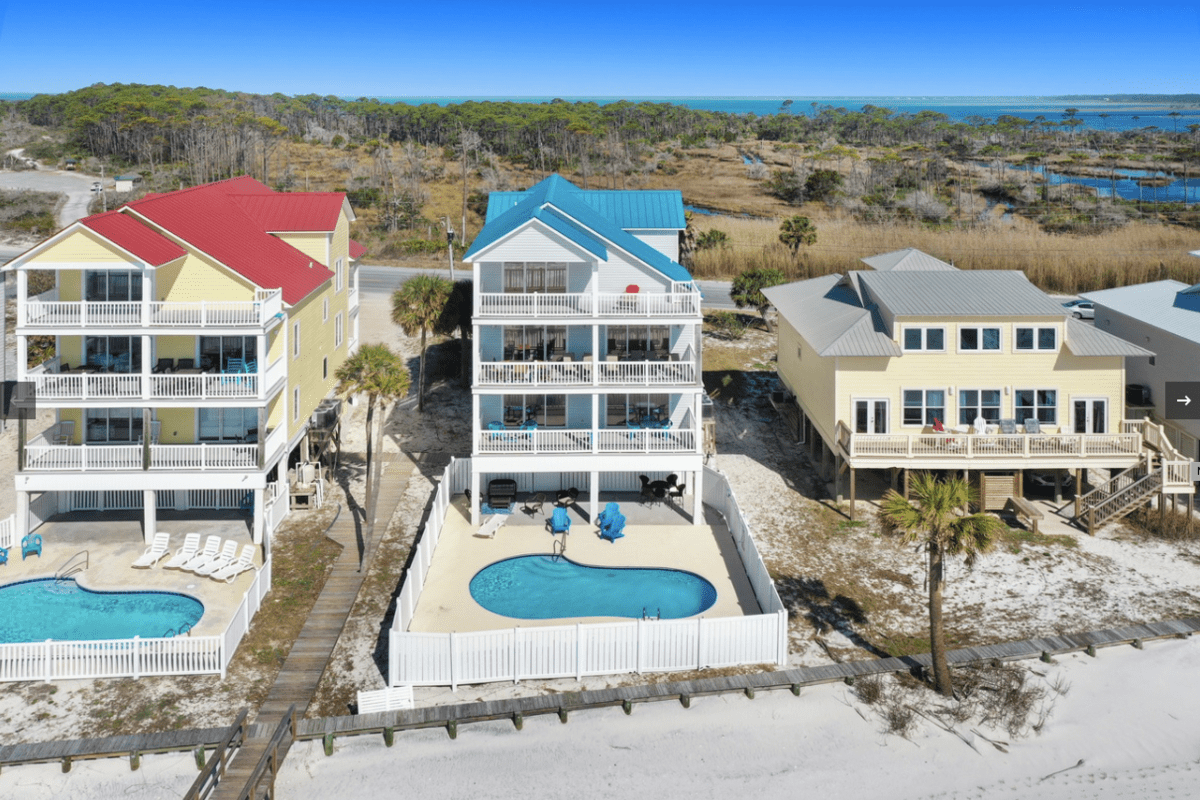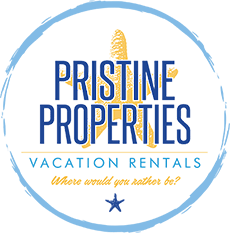By Carrie | Updated: April 23, 2025
In the world of Florida Panhandle property management, keeping an eye on your rental's performance is essential. Not sure where to focus? This blog will guide you through the key metrics that matter.
A vacation rental business in Mexico Beach can be a great investment, but success requires more than just a prime location. If you focus solely on revenue without considering factors like occupancy rates or guest feedback, you might be overlooking critical opportunities for improvement.
To truly optimize profitability and ensure smooth operations, the best Mexico Beach property management companies closely monitor several Key Performance Indicators (KPIs). These metrics provide valuable insights into your rental's financial health, guest satisfaction, and overall operational efficiency.
This blog will serve as your go-to cheat sheet, outlining the essential KPIs you should track and why they are crucial for your business.
Contents
2. Revenue KPIs: Measuring Profitability
3. Occupancy Rate: Understanding Demand
4. Average Daily Rate (ADR): Maximizing Earnings Per Night
5. Revenue Per Available Room (RevPAR): Balancing Pricing and Demand
6. Review Score: The Impact of Guest Satisfaction
7. Average Length of Stay (ALOS): Managing Turnover and Profitability
8. Booking Window: Understanding Guest Booking Behavior
9. Net Operating Income (NOI): Measuring True Profitability
10. Revenue Per Channel: Identifying the Best Booking Sources
11. Average Response Time: Improving Guest Communication
12. Inquiry-to-Booking Conversion Rate: Turning Interest into Confirmed Stays
13. Extra Tips: How to Track KPIs Effectively
14. Mexico Beach Property Management KPI FAQs
15. Boost Profits: Partner With The Best in Mexico Beach Property Management
Before we start...
At Pristine Properties, we take pride in setting the gold standard for property management in the Florida Panhandle. Since our beginnings in 2003 as a small family-owned and operated company, we've grown into the largest property management company in the area, managing nearly 250 properties across Cape San Blas, Mexico Beach, and Port St. Joe. Our standards are exactly what you should expect from a top-tier property management company in our area.
Now, let's dive into this 101 guide on key KPIs Florida Panhandle property management experts should keep an eye on.

1. Revenue KPIs: Measuring Profitability
Revenue is the most basic yet critical KPI. It reflects the total income generated by your short-term rental over a given period. However, revenue alone doesn't paint the full picture. A rental may generate a high income but still be inefficient due to excessive costs. That's why property managers also track revenue per property, ensuring that each unit is contributing to overall profitability.
- Revenue Formula: Revenue = Average Daily Rate (ADR) × Occupancy Rate × Number of Days
- Revenue Per Property Formula: Revenue Per Property = Total Rental Income / Number of Properties
Comparing these metrics over time helps identify trends and areas for improvement.
2. Occupancy Rate: Understanding Demand
Occupancy rate measures how often your property is booked versus its availability. While a high occupancy rate is generally positive, an unusually high percentage might indicate that your prices are too low, leaving money on the table. Conversely, a low occupancy rate suggests your property isn't attracting enough bookings, which could be due to pricing, listing quality, or seasonal demand shifts.
- Occupancy Rate Formula: Occupancy Rate = (Number of Nights Rented / Number of Nights Available) × 100
A good benchmark for short-term rentals in the U.S. is 65% or higher, with 75% or more being considered top-tier.
3. Average Daily Rate (ADR): Maximizing Earnings Per Night
Your ADR tells you how much you earn per booked night on average. It's a key metric for assessing pricing effectiveness. If your ADR is too low, you could be undercharging. If it's too high, you might struggle to secure bookings. Monitoring ADR across seasons can help fine-tune your pricing strategy.

4. Revenue Per Available Room (RevPAR): Balancing Pricing and Demand
RevPAR is a widely used KPI in the hospitality industry that measures the revenue generated per available night. It provides insights into how well a property is utilizing its available nights.
- RevPAR Formula: RevPAR = Gross Rental Revenue / Total Available Nights
If RevPAR is lower than expected, consider adjusting pricing or marketing strategies.
5. Review Score: The Impact of Guest Satisfaction
Guest feedback directly influences bookings. Higher ratings lead to increased visibility on platforms like Airbnb, attracting more guests. If your review scores dip, it may indicate issues with cleanliness, amenities, or communication. Keeping an eye on guest reviews helps you address concerns before they impact future bookings.
Regularly checking review trends allows you to refine your hosting approach, ensuring a consistently high standard.
6. Average Length of Stay (ALOS): Managing Turnover and Profitability
ALOS measures the typical duration of guest stays. Longer stays reduce operational costs, such as cleaning fees and check-in logistics, making them more profitable. Encouraging weekly or monthly bookings can enhance your ALOS and minimize turnover.
- ALOS Formula: Average Length of Stay = Total Nights Booked / Total Guest Bookings
7. Booking Window: Understanding Guest Booking Behavior
Some guests book months in advance, while others wait until the last minute. Knowing your booking window helps tailor your pricing and marketing efforts.
- Booking Window Formula: Booking Window = Total Days Between Booking Date & Check-in / Total Bookings
A longer booking window suggests demand stability, while shorter windows may indicate a need for last-minute discounts or promotions.
8. Net Operating Income (NOI): Measuring True Profitability
While revenue is essential, what really matters is how much of it you keep after expenses. NOI provides a clearer picture of your rental's financial health by accounting for operating costs such as utilities, maintenance, and service fees.
- NOI Formula: Net Operating Income = Gross Income – Operating Expenses
If your NOI is consistently low or negative, consider reevaluating costs and increasing rates where feasible.

9. Revenue Per Channel: Identifying the Best Booking Sources
Not all booking platforms are equally profitable. Tracking revenue per channel helps you determine where to focus marketing efforts and which platforms yield the highest return.
If most of your bookings come from Airbnb but at a high commission cost, investing in direct bookings through a personal website could improve profitability.
10. Average Response Time: Improving Guest Communication
Quick responses enhance guest satisfaction and increase your ranking on online travel agencies (OTAs). If you're slow to respond, potential guests may book elsewhere. Ensuring a fast response time can significantly impact conversion rates.
- Response Time Formula: Average Response Time = Total Response Time / Number of Guest Requests
Keeping response times under one hour improves engagement and booking chances.
11. Inquiry-to-Booking Conversion Rate: Turning Interest into Confirmed Stays
This KPI shows how many inquiries result in actual bookings. A high rate suggests your listing is appealing and that you're responding effectively to potential guests.
- Conversion Formula: Inquiry-to-Booking Conversion = (Number of Bookings / Number of Inquiries) × 100
If your conversion rate is low, evaluate your pricing, response time, and listing appeal.
Extra Tips: How to Track KPIs Effectively
Tracking KPIs doesn't have to be complicated. Many OTAs, such as Airbnb and Vrbo, provide built-in analytics that display key performance metrics. For direct bookings, tools like Google Analytics can monitor website traffic and conversion rates.
If you manage multiple properties, property management software (PMS) such as Hostfully or Beyond Pricing can streamline KPI tracking and reporting. When I first started managing a few vacation rentals, I relied solely on Google Sheets to track everything—bookings, revenue, occupancy. It worked for a while, but as I took on more properties, things got messy fast. Switching to Hostfully was a game changer. Suddenly, I could see all my KPIs in one place. It felt like I went from juggling plates to having a well-oiled machine handling the details.

Mexico Beach Property Management KPI FAQs
What are KPIs in property management?
KPIs, or Key Performance Indicators, are measurable metrics that help property managers assess the performance of their vacation rentals. They provide insights into revenue, occupancy, guest satisfaction, and operational efficiency.
Why should I track KPIs for my vacation rental?
Tracking KPIs helps you make data-driven decisions, optimize pricing, enhance guest experiences, and increase profitability. Without monitoring key metrics, you could miss opportunities for growth or overlook areas that need improvement.
Which KPIs are most important for vacation rentals?
Some of the most essential KPIs include:
- Revenue & Occupancy Rate – Measure overall income and how often your rental is booked.
- Average Daily Rate (ADR) & RevPAR – Assess pricing efficiency and revenue per available night.
- Review Scores – Guest feedback impacts bookings and ranking on OTAs.
- Booking Behavior (ALOS & Booking Window) – Understand how long guests stay and when they book.
- Net Operating Income (NOI) – Calculate actual profitability after expenses.
- Revenue Per Channel – Identify the most profitable booking sources.
- Response Time & Conversion Rates – Faster replies and optimized listings lead to more bookings.
How can tracking KPIs improve my rental business?
By tracking KPIs, you can:
- Adjust pricing strategies to maximize revenue.
- Improve guest satisfaction and earn better reviews.
- Optimize operations to reduce unnecessary costs.
- Identify and capitalize on market trends.
How do I track KPIs for my vacation rental?
Many OTA platforms like Airbnb and Vrbo provide built-in analytics. Additionally, property management software (PMS) like Hostfully or Beyond Pricing can streamline KPI tracking. If you prefer a manual approach, maintaining a spreadsheet with key metrics can also be effective.
What is a good occupancy rate for a vacation rental?
A strong occupancy rate for short-term rentals is typically 65% or higher, with 75%+ considered excellent. If your occupancy is too high, you may be underpricing your rental. If it's too low, marketing or pricing adjustments might be necessary.
How can I improve my vacation rental's review scores?
To boost guest satisfaction and review scores:
- Keep your rental clean and well-maintained.
- Provide clear communication and fast response times.
- Offer thoughtful amenities that enhance guest experiences.
- Ask satisfied guests to leave positive reviews.
How can I increase my inquiry-to-booking conversion rate?
To improve conversions, ensure your listing is optimized with high-quality photos, competitive pricing, and clear, engaging descriptions. Respond promptly to inquiries and address any concerns potential guests may have.
What tools can help me track KPIs effectively?
Using built-in analytics from OTA platforms, Google Analytics for direct bookings, and PMS software can simplify tracking. A well-maintained Excel or Google Sheets dashboard is also a useful option for keeping metrics organized.

Boost Profits: Partner With The Best in Mexico Beach Property Management
At Pristine Properties Vacation Rentals, we've been managing rental properties in the Florida Panhandle for years. With our expertise and systems in place, we'll ensure your property stays booked and profitable year-round!
Visit our website to get a free rental estimate and see how partnering with a professional vacation rental company like ours could be the perfect solution for your property management needs.
As an aside, visit Great Ocean Condos if you need vacation rentals in New Smyrna Beach.


